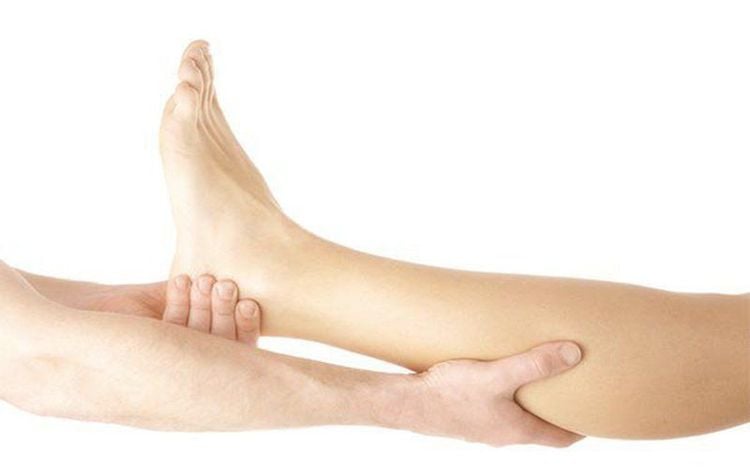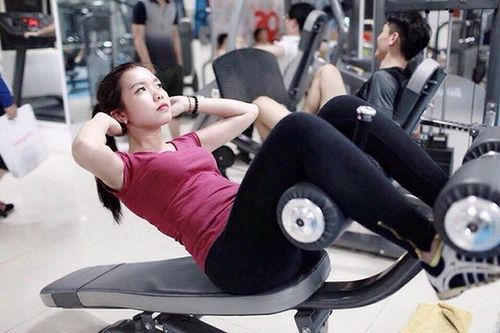This is an automatically translated article.
When there is excessive muscle tension in the legs, the patient needs to be treated immediately to avoid causing unfortunate consequences. Simple cases can be handled at home. In case of serious injury, the patient needs to be treated by a specialist.1. What is a muscle strain?
A muscle strain or even a muscle tear is an injury to a muscle or tendons. This condition occurs when the muscles are under excessive pressure during daily activities, during sudden heavy lifting or during sports,...
Muscle damage can be in the form of partial or total tearing. muscle fibers and tendons attach to the muscle. Besides, muscle tear can also damage small blood vessels, causing local bleeding or bruising, pain due to irritation of nerve endings.
Symptoms of muscle strain include:
Swelling, bruising or redness due to injury; Pain at rest; Pain in a muscle or joint related to that muscle during activity; Weakness in muscles or tendons; The body cannot be used.
2. What is a calf strain?
Muscle strain can happen in any muscle. In the legs, the patient may have strains of the soles of the feet, strains of the calf muscles, etc. Leg muscle strains are a common injury, especially in athletes or people who practice often. Stretched calf muscles can also be a chronic condition resulting from a long-term injury or an acute condition caused by short-term overuse.
The symptoms of calf strain depend on the severity of the injury. In mild cases of muscle strain, the patient will experience pain and discomfort in the leg. Other signs include mild swelling, redness, bruising, inability to stand upright,... In case of excessive muscle tension, the patient may experience sharp pain, affecting mobility, not walking. can again.
MORE: Excessive muscle tension: Causes, symptoms, diagnosis and treatment

Căng cơ có thể xảy ra ở bất kỳ cơ bắp nào
3. When to see a doctor?
If the injury is serious or the home care measures do not improve within 24 hours, the person with the muscle strain should be taken to the hospital for examination; When the patient is seriously injured, unable to walk, or has swelling, pain, fever, or a large open wound, the patient should be taken to the hospital immediately. Upon arrival at the hospital, the doctor will ask about the patient's medical history and perform a physical exam. During the examination, the doctor will determine if the muscle is partially or completely torn so that the right treatment options are available. Patients usually do not need to have X-rays or tests done, unless there is a history of trauma or symptoms of infection.
4. What to do with leg muscle strain?
4.1 Treatment at home When a muscle strain, the patient can first treat at home as follows:
Treat swelling and tearing blood vessels early by applying ice to the muscle strain. When the swelling has subsided, you can apply heat to the patient. However, care should be taken not to apply heat too soon because it can cause more swelling and pain. First-aiders also need to be careful not to apply ice or heat to the bare skin, but need a protective covering such as a towel to separate the ice or heat from the skin;
Take nonsteroidal anti-inflammatory drugs (NSAIDS) such as ibuprofen or naproxen to relieve pain and improve walking. If you have kidney disease, a history of gastrointestinal bleeding, or are taking blood thinners such as Coumadin, you should not take NSAIDs without your doctor's prescription. In that case, it's safer to use acetaminophen for pain (but not inflammation);
Protect the body, rest, apply ice to tense muscles. To perform, the patient first needs to remove clothing and jewelry in the area of muscle tension. Then:
Protect the strained muscle from further injury; Rest tense muscles and avoid activities that cause stress or pain; Apply ice to the tense muscle for 20 minutes every hour (except while sleeping). Ice is an effective anti-inflammatory and pain reliever. The patient can apply small ice cubes or cold water to the tense muscle to reduce inflammation; The swollen muscle can be covered with an elastic bandage to help reduce swelling and be careful not to wrap it tightly; Elevate the injured muscle to reduce swelling. Specifically, with the case of calf muscle strain, it is recommended to raise the leg muscles when sitting; Do not perform activities that increase pain or work on the affected body part until the pain has significantly decreased. 4.2 Hospital Management Treatment of overstretched muscle in the hospital is similar to treatment at home. However, the doctor can determine if the muscle and tendon injury is more severe to decide whether a brace or crutches is needed. In addition, the doctor can also give the patient advice on whether to limit activities or take time off from work, and at the same time, what physical therapy, rehabilitation exercises should be done, ... to recover soon. restore as before.

Điều trị căng cơ quá mức tại bệnh viện tương tự việc điều trị tại nhà
5. Recovery time
It usually takes about 3 days for the strained calf muscles to start getting better. However, full recovery can take up to 6 weeks. In severe cases of swelling, the patient may experience pain and discomfort for longer. Patients can practice walking to shorten the recovery time. In the case of surgery due to overstretched calf muscles, it can take weeks to months for the patient to fully recover.
Patients should pay attention to have an appropriate rest time, do not return to exercise too soon because it can make muscle tension worse. There are cases of recurrent calf strains within 1-2 weeks of the injury.
6. Measures to prevent excessive muscle tension
For people who have had calf strain in the past, the risk of muscle strain later on is higher. Therefore, it is necessary to pay attention to prevent the risk of muscle strain by:
Avoiding injuries caused by daily stretching; Exercise on the advice of a doctor; Stretching muscles after exercise; It is important to warm up well before strenuous exercise. Can be started by running lightly in place for a few minutes; Avoid strenuous activities if you are not ready. In most cases, with proper home treatment, people with calf strains make a full recovery. For more complicated cases, a doctor's support is required.
Please dial HOTLINE for more information or register for an appointment HERE. Download MyVinmec app to make appointments faster and to manage your bookings easily.
Reference sources: webmd.com, healthline.com












